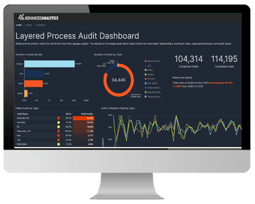Embark on Your Data Journey
Step One - Data Ingestion

Step 2
Data Storage

Step 3
Analytics
What is data ingestion?
Data ingestion is the first step in the data pipeline, where data from diverse sources such as databases, streaming platforms, and external APIs, is collected and ingested into AWS services for storage, processing, and analysis, laying the foundation for informed decision-making.
Here's how we can assist you in your data ingestion journey:
-
Identifying Data Sources: Whether your data is coming from databases, IoT devices, logs, or files from third parties, we'll help you identify all potential data sources.
-
Structuring Data: We'll assess whether your data is structured or unstructured and determine its current format.
-
Managing Data Volume: Understanding the size of your data is essential. We'll analyze whether it's measured in gigabytes, terabytes, or even petabytes.
-
Evaluating Data Growth: We'll evaluate the rate at which your data is growing to anticipate future needs accurately.
-
Tracking Data Changes: We'll examine whether your current source systems effectively track data changes to ensure data integrity and reliability.
Work with Mindex
Ready to get started?
Engage our cloud data team for a Complimentary Data Architecture Review led by a Certified AWS Data Architect.
In this one-hour session, we'll review your data pipeline's key pillars: Data Ingestion, Storage, and Analytics (AI/ML, Business Intelligence). Our goal is to identify challenges, opportunities, and establish a long-term data strategy, outlining next steps to enhance your data, analytics, and AI journey.
Dive Deeper into Data Ingestion
Explore our latest blog posts to assist you on your data journey!
4 min read
Revolutionizing School Resource Collaboration: How NERIC and Mindex innovated cross-district course capacity sharing with Amazon QuickSight
May 6, 2025 by Mindex
We’re excited to share that our team recently authored a guest article for the AWS Business Intelligence Blog! The...
4 min read
Mindex Achieves AWS Data and Analytics Competency Status
Oct 30, 2024 by Mindex
ROCHESTER, NY – October 30, 2024 – Mindex, a leading provider of enterprise software development and cloud services,...
5 min read
Mindex uses Amazon Q in QuickSight to democratize analytics and drive student success in education
Aug 30, 2024 by Mindex
We’re excited to share that our team recently authored a guest article for the AWS Business Intelligence Blog! In the...
Frequently Asked Questions
-
How does Mindex help with identifying and managing data sources?
Mindex assists in identifying all potential data sources relevant to your business, whether they come from databases, IoT devices, logs, or external files. We also help structure this data and manage its volume, ensuring that all sources are effectively integrated into your data pipeline for seamless processing and analysis.
-
What do you mean by structuring data, and how do you determine its format?
Structuring data involves assessing whether your data is organized in a specific format (structured) or if it lacks a predefined schema (unstructured). Mindex will evaluate the format and structure of your data to ensure it is properly prepared for ingestion and can be effectively used in your data processing and analytics workflows.
-
How do you handle large volumes of data and anticipate future growth?
Understanding the size of your data—whether in gigabytes, terabytes, or petabytes—is critical for proper planning and management. Mindex will analyze your current data volume and growth rate to anticipate future needs and ensure your data infrastructure can scale accordingly.
-
Why is tracking data changes important, and how do you ensure data integrity?
Tracking data changes is essential for maintaining data integrity and reliability. Mindex examines your source systems to ensure they effectively monitor and manage data changes, which helps prevent inconsistencies and supports accurate data analysis.
-
What is involved in a Data Architecture Review with Mindex?
A Data Architecture Review with Mindex is a complimentary one-hour session led by a Certified AWS Data Architect. We’ll assess the key components of your data pipeline, including ingestion, storage, and analytics, to identify challenges and opportunities. This review helps establish a long-term data strategy and outlines actionable steps to enhance your data management and analytics capabilities.
AWS Purpose Built Analytics
Serverless and Easy To Use
AWS has the most serverless options for your data analytics in the cloud, including options for data warehousing, big data analytics, real-time data, data integration, and more. AWS manages your organization's underlying infrastructure so you can focus solely on your application.
Machine Learning (ML) Integration
AWS analytics services leverage proven machine learning (ML) and natural language capabilities to help you gain deeper and faster insights from your organization's data.
Ingest Data from Any Source
The AWS Cloud enables customers to overcome the challenge of connecting to and extracting data from APIs, streaming data, on-prem databases, or file-based sources in order to aggregate and analyze your data at near infinite scale.
Gain Insights from your Data
AWS analytics services offer a range of analytics use cases, including interactive analysis, big data processing, data warehousing, real-time analytics, operational analytics, dashboards, and visualizations.
By leveraging data-driven real-time analytics instead of intuition or guesswork, you can make more informed decisions.
Scalable Data Lakes
AWS-powered data lakes, supported by the unmatched availability of Amazon S3, can handle the scale, agility, and flexibility required to combine different data and analytics approaches. Build and store your data lakes on AWS to gain deeper insights than traditional data silos and data warehouses allow.


.png?width=340&height=60&name=8cda0b58-762f-4aaf-a665-2c382dfa7eae%20(2).png)
